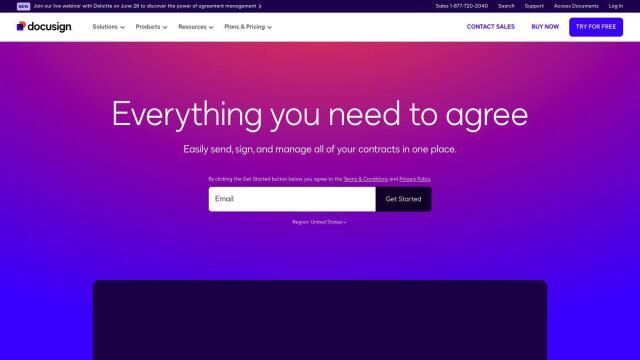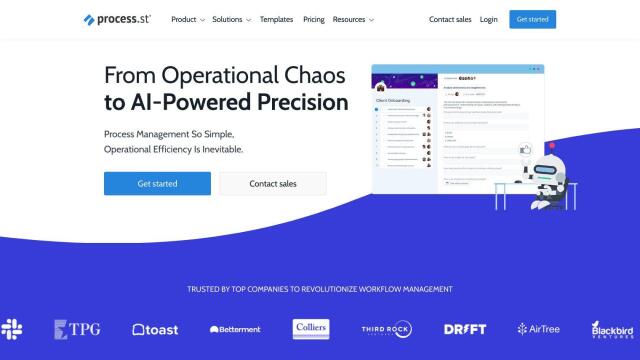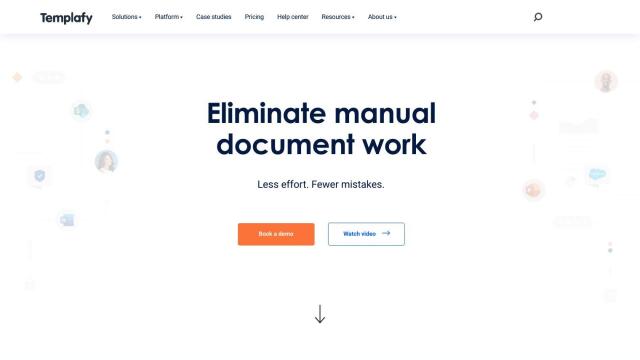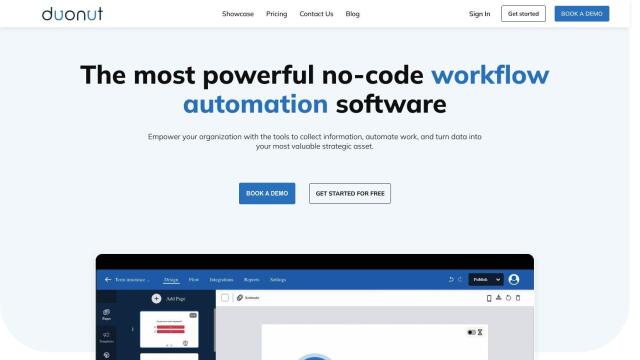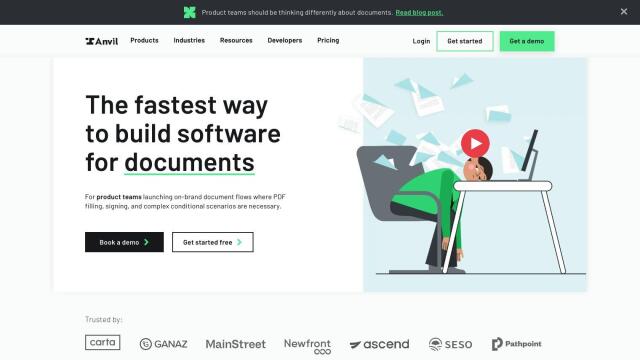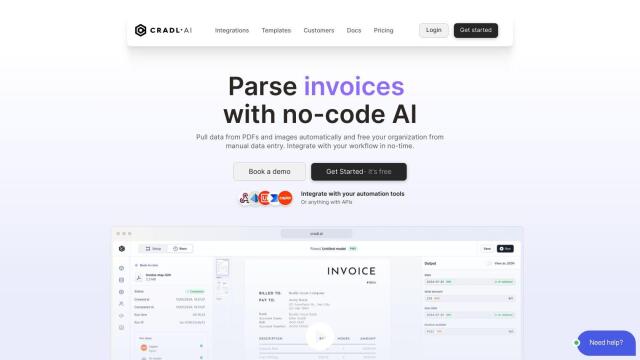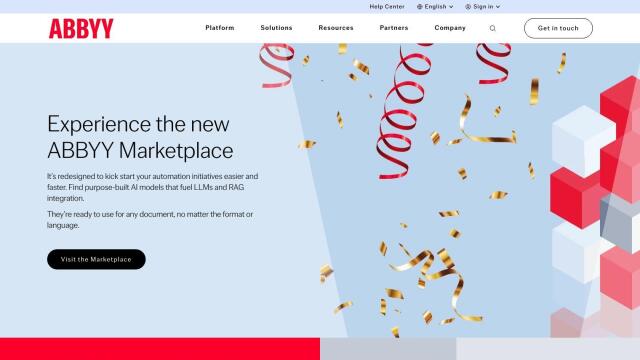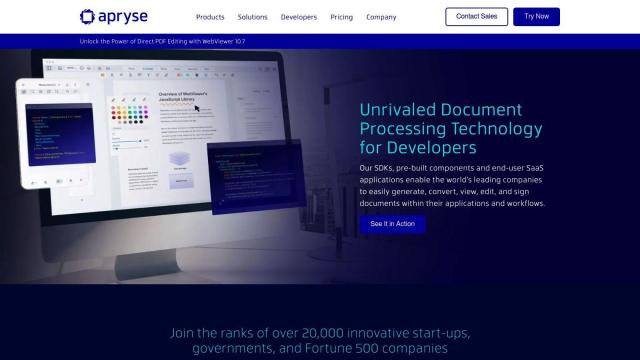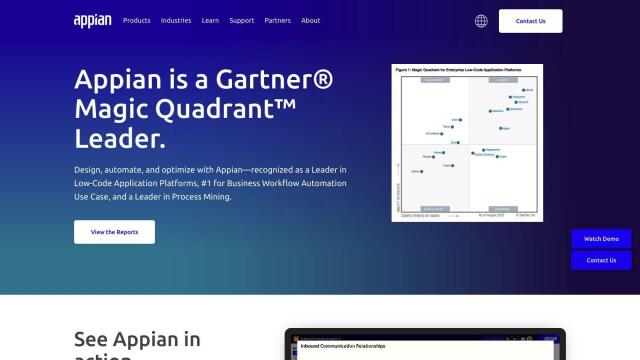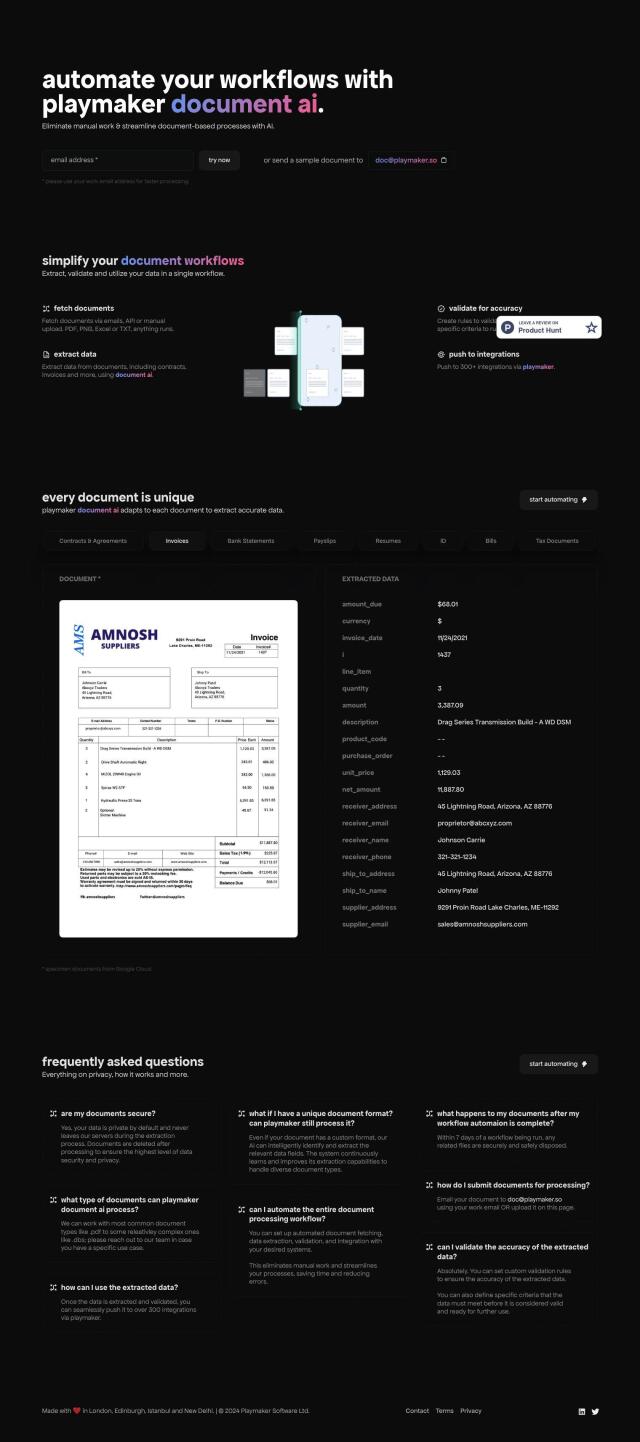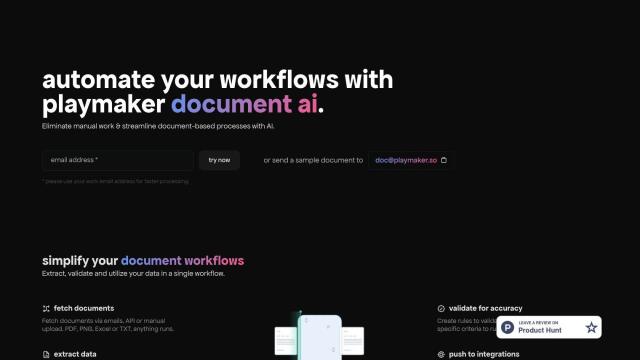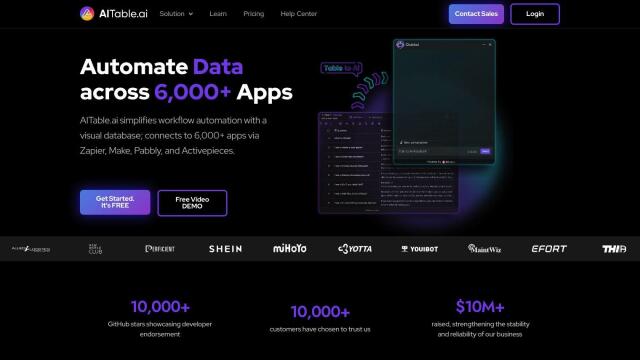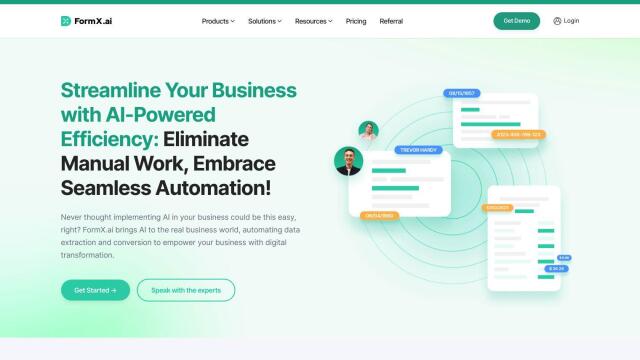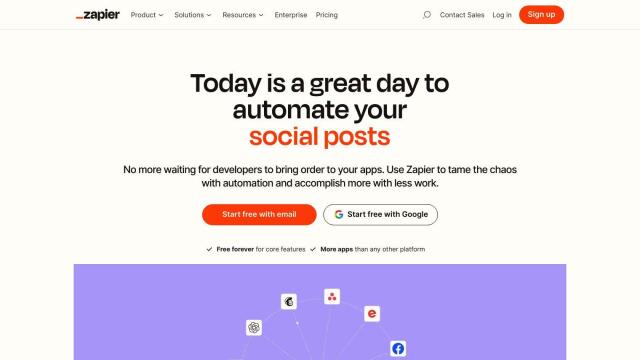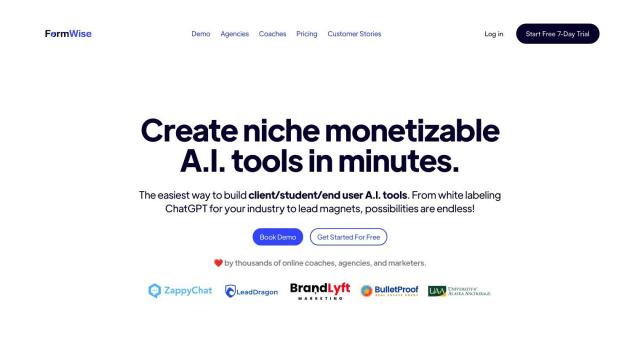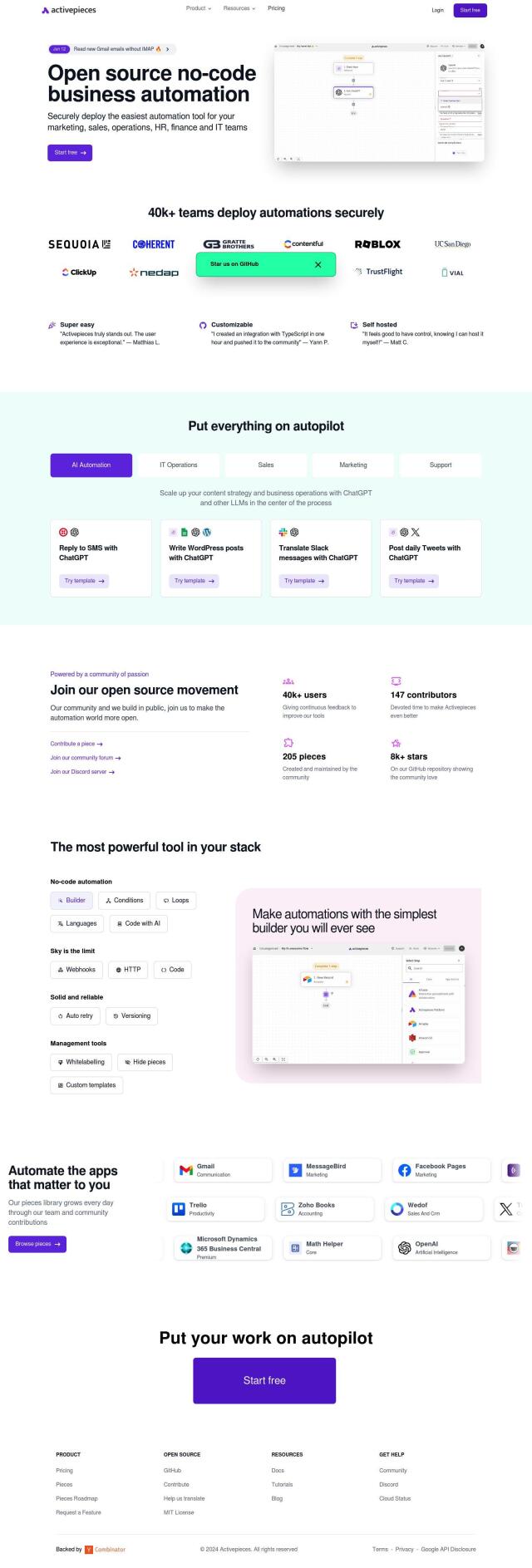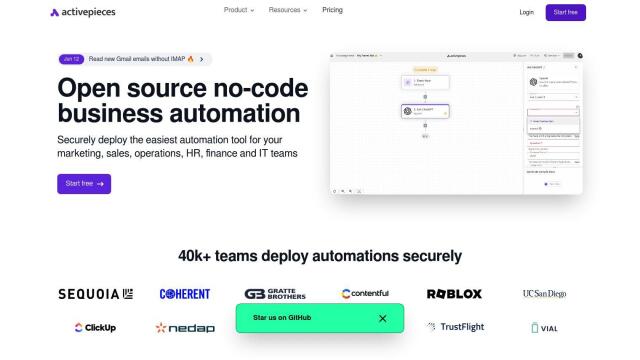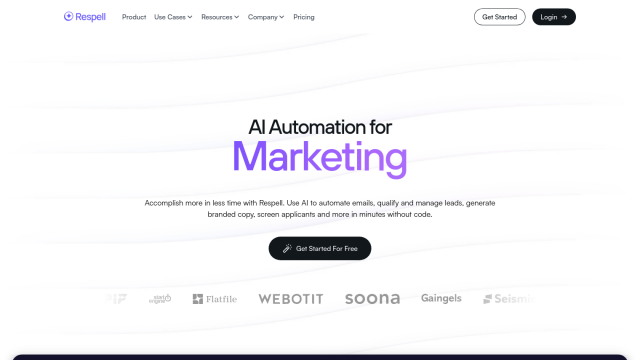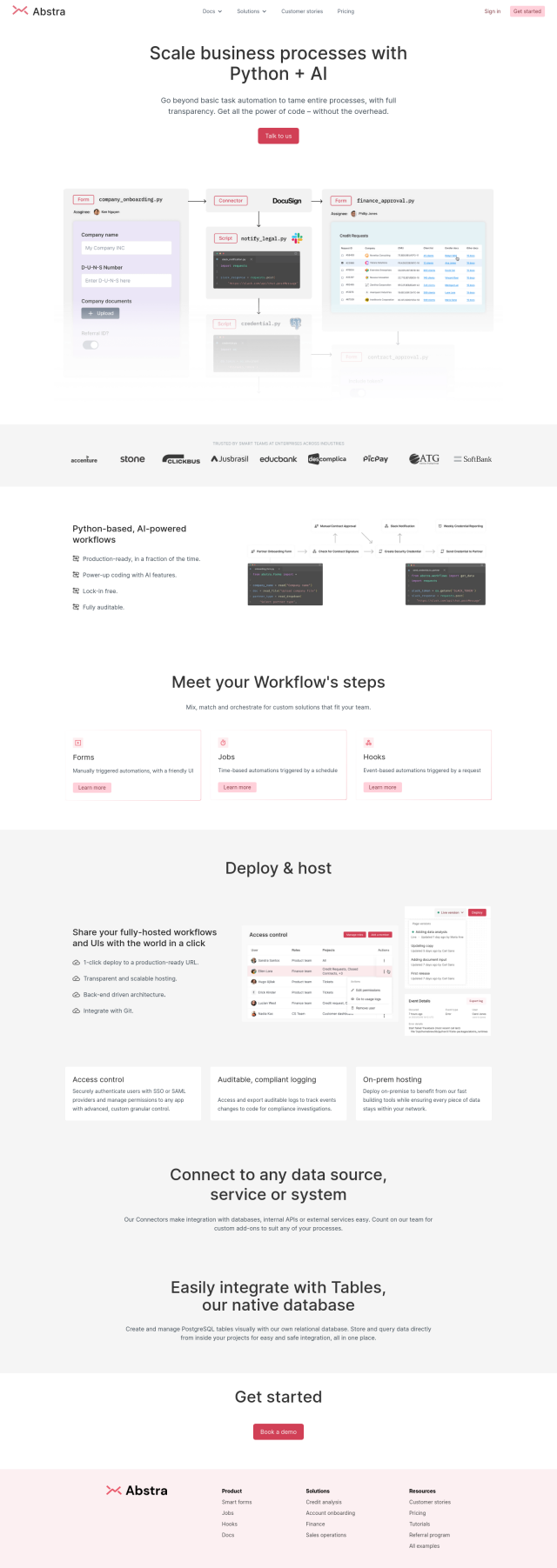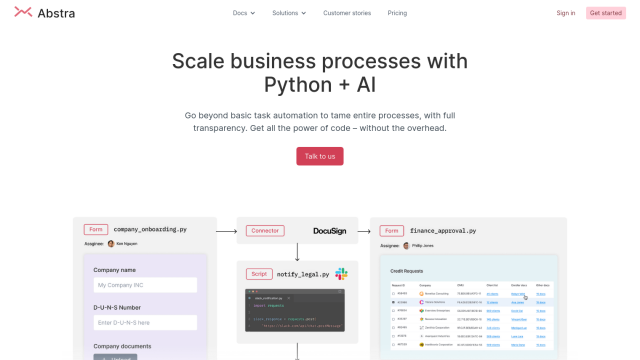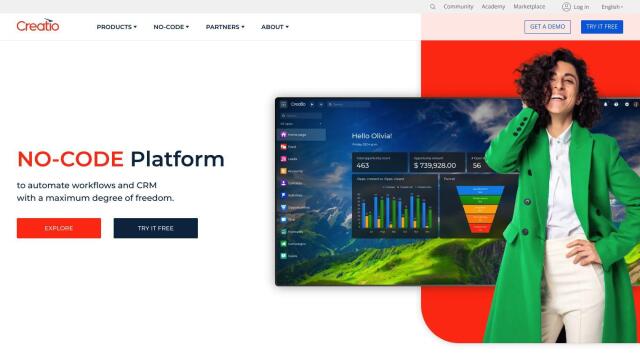Question: I'm looking for a solution that can create custom forms and tasks, as well as automate document creation with variables, do you know of one?

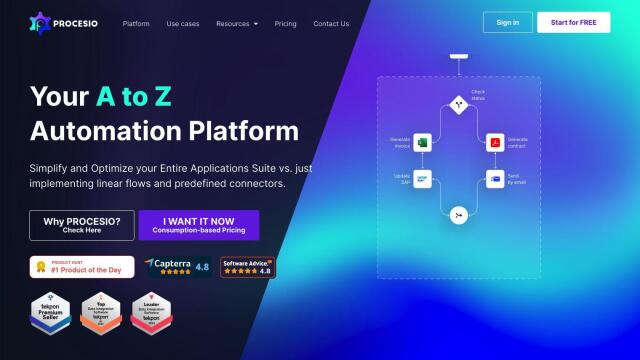
PROCESIO
If you need a more powerful tool for building custom forms and tasks, automating document creation with variables, and more, PROCESIO is a good option. It's an automation platform that spans no-code and low-code tools, so it's useful to both techies and nontechies. With a Forms & Tasks Designer, Document Designer and customizable actions, PROCESIO can automate complex processes and streamline application suites. It's designed to scale, with pricing tied to processing time, so it can be used in many industries and situations.
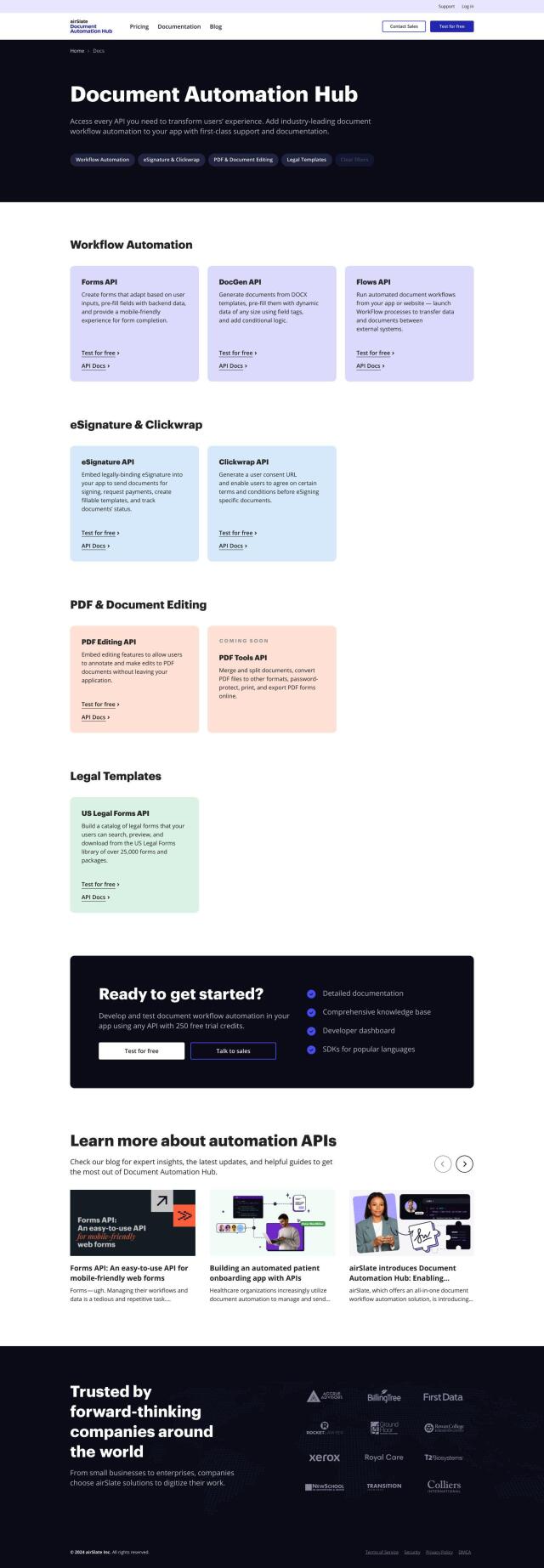
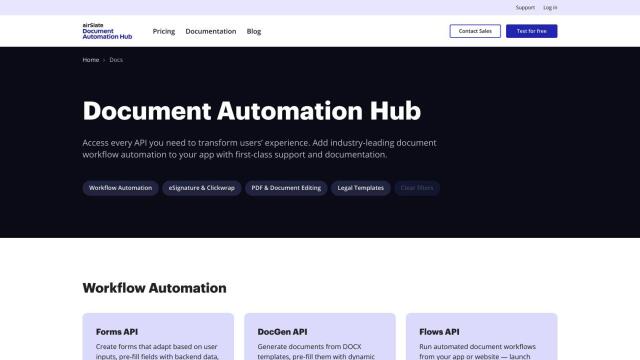
Document Automation Hub
Another option is the Document Automation Hub. This is an API that lets developers add document workflow automation to their own apps. It includes adaptive forms, generation of documents from DOCX templates, and legally binding electronic signatures. It also includes PDF editing and PDF tools, and integrates with a library of more than 25,000 legal forms. That makes it a good option for developers who want to automate document workflows in their apps without worrying about deployment and maintenance costs.

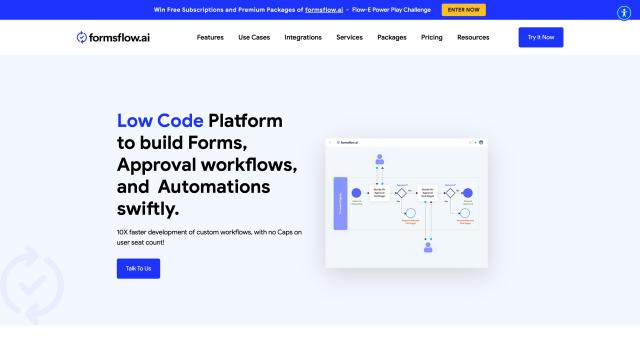
formsflow.ai
For low-code tools, check out formsflow.ai. It lets you build business apps quickly with a drag-and-drop form builder and workflow builder, and it includes advanced analytics and integration with more than 1000 popular software packages. With an AI-assisted form builder and a Camunda BPMN 2.0 compliant workflow engine, formsflow.ai is good for departments and industries that need to automate form creation and workflow.

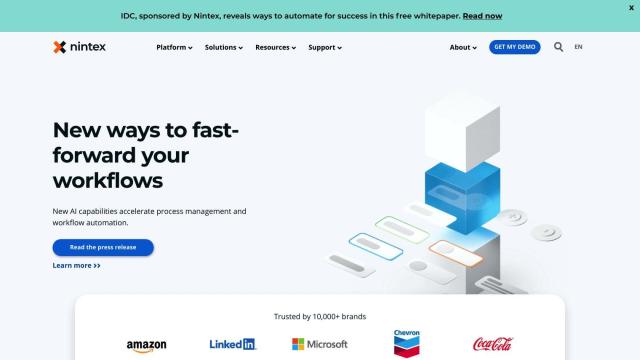
Nintex
Last, Nintex is a full-fledged process management and workflow automation tool that uses AI to help find, document and manage processes. It includes tools for form automation, document generation and robotic process automation. With prebuilt templates and connectors to link to third-party software, Nintex is geared for citizen developers and experienced IT pros, so it's a good option for automating and managing a wide variety of business processes.

